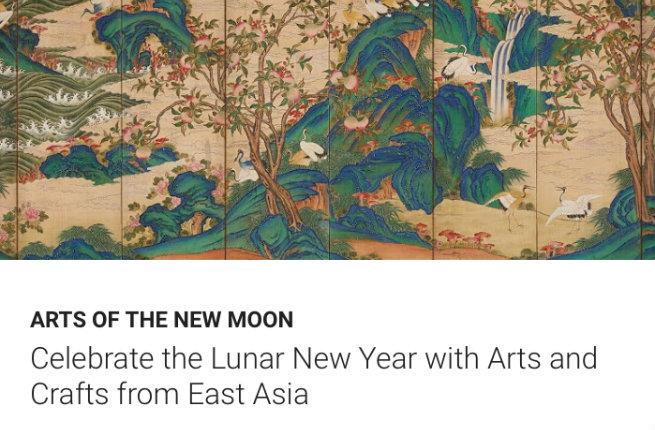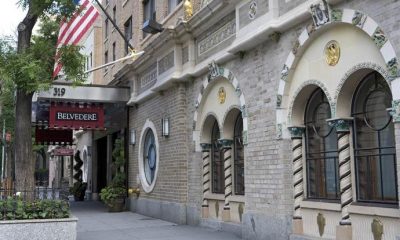Travel Tips
10 Fascinating Places You Are NOT Allowed to Visit
- /home/discountdealsonh/public_html/wp-content/plugins/mvp-social-buttons/mvp-social-buttons.php on line 27
https://www.discountdealsonhotels.com/wp-content/uploads/2017/08/10-places-you-are-not-allowed-to-visit-qin-shi-huang.jpg&description=10 Fascinating Places You Are NOT Allowed to Visit', 'pinterestShare', 'width=750,height=350'); return false;" title="Pin This Post">
- Share
- Tweet /home/discountdealsonh/public_html/wp-content/plugins/mvp-social-buttons/mvp-social-buttons.php on line 69
https://www.discountdealsonhotels.com/wp-content/uploads/2017/08/10-places-you-are-not-allowed-to-visit-qin-shi-huang.jpg&description=10 Fascinating Places You Are NOT Allowed to Visit', 'pinterestShare', 'width=750,height=350'); return false;" title="Pin This Post">

With new transportation links and travel apps that improve planning and booking, the most secluded corners on earth have become closer than ever. However, there are some places around the world that will never make it into the tourism brochures, and for good reason. Whether it’s an island infested with venomous snakes or the Pope’s secret archives, the destinations on our list are closed off from the public. Here are 10 fascinating places you are NOT allowed to visit.–Wibke Carter

Area 51
Nevada
Area 51 is arguably one of the most secretive places on earth. Also known as Groom Lake, the United States Air Force base’s purpose remains unknown to the public, leading to wild speculations and conspiracy theories. It is commonly thought that top-secret aircraft and weapons technologies have been developed and tested in Area 51 since the facility was established by the Central Intelligence Agency (CIA) in 1955. Others believe the area houses UFOs and that aliens are being held captive there. Although Area 51 was never declared a secret base, it took until 2005 for the U.S. government to publicly acknowledge its existence. Access to the area around Groom Lake, controlled by surveillance and motion sensors, is off-limits to civilians and the airspace above is a no-fly zone for commercial aircraft.
PLAN YOUR TRIP: VisitFodor’s Nevada Travel Guide

Club 33
Anaheim, California
Who saysDisneyland is for children only? The secret feature of the theme park, Club 33, is an invitation-only private club that was first opened in 1967. Located at the intersection of Royal Street and Orleans Street in New Orleans Square, Club 33 was intended as a place to host dignitaries, investors, and celebrities. The waiting list for membership is several years long and after an initiation fee (rumored to be between $25,000 and $100,000), members pay an annual fee of $12,000. In exchange, members have access to two dining halls, VIP cards, valet parking, jazz lounge Le Salon Nouveau, and the 1901 Lounge in Disney California Adventure, the only place that serves alcohol in Disneyland.
PLAN YOUR TRIP: Visit Fodor’s California Travel Guide

The Lascaux Caves
Lascaux, France
The world famous cave of Lascaux are found in every history book thanks to their more than 17,000-year-old paintings of humans and animals. Clearly visible in the over 600 works of art that adorn the complex of caves in southwesternFrance are aurochs, horses, deer, and plants corresponding to fossil records from the Upper Paleolithic period. Although named a UNESCO World Heritage Site in 1979, the caves have not been accessible since 1963. After opening them to the public after WWII, the presence of visitors and influx of light created a number of problems like the growth of lichen, crystals, microbes, and fungi, forcing a permanent closure to preserve the site.
PLAN YOUR TRIP: Visit Fodor’s Dordogne Travel Guide

North Sentinel Island
Andaman Islands, India
A friendly smile goes a long way when traveling but the people of North Sentinel Island in the Indian Ocean want nothing to do with outside society. In fact, if you were to set foot on the island, the Sentinelese would try to kill you. Almost nothing is known about this indigenous tribe which has inhabited the island for more than 60,000 years. The Sentinelese are completely cut-off from modern civilization by their own choice. After failing to make a connection (even after rescuers from the 2004 tsunami were met with hostility), the Indian government has stopped all attempts and prohibited travel within three miles of the island. In 2006, two illegally operating fishermen were killed when they broke the rules and visited the island.
PLAN YOUR TRIP: VisitFodor’s India Travel Guide

Poveglia
Veneto, Italy
The small island of Poveglia nearVenice is described by locals as the most haunted place on earth. A mass burial ground for plague victims and people with infectious diseases, the island also became home to a mental hospital where a doctor was rumored to have conducted experiments on patients (before he committed suicide). Very few people have set foot on the island since the 1960s, and locals are only willing to take visitors for a very high price. However, that might change soon. Poveglia, also nicknamed the real Shutter Island, was put up for auction in 2014 and there are several plans to redevelop the 18-acre plot of land. Restoring the derelict buildings including the church, hospital, asylum, bell tower, and staff housing is estimated to cost at least $20 million.
PLAN YOUR TRIP: Visit Fodor’s Veneto and Friuli-Venezia Travel Guide

Qin Shi Huang
Xian, China
Buried under a 250ft high hill, the tomb ofChina’s first emperor Qin Shi Huang, who died in 210 B.C., remains a mystery. The 1974 discovery of the life-size terracotta warrior army is one of the greatest archaeological finds of all times and lead to more than four decades of excavations. The grave of the emperor they are guarding and an estimated 6,000-8,000 additional warriors have remained undisturbed for more than two millennia. It is not likely that the tomb will be opened anytime soon, neither for scientists nor tourists. From booby traps mentioned in ancient literature to the large scale of the underground palace itself, it appears that no technology worldwide is ready to deal safely with the excavation.
PLAN YOUR TRIP: Visit Fodor’s The Silk Road Travel Guide

Ilha da Queimada Grande (Snake Island)
São Paulo state, Brazil
What could be a lovely tropical island is actually one of the deadliest places on earth. Ilha da Queimada Grande, also nicknamed Snake Island, is the only home to thousands of highly venomous golden lancehead pit vipers. The island is located about 90 miles offshore and access is strictly controlled by the Brazilian government. Estimates claim that there is one snake for every three square feet in some spots. Annual visits by the navy to look after the lighthouse are always conducted with a doctor present as bites can cause internal bleeding, kidney failure, and death. Although the snakes are dangerous, the real reason the island is closed to the public is to protect the critically endangered snakes from poaching.
PLAN YOUR TRIP: VisitFodor’s Side Trips from São Paulo Trael Guide

Svalbard Global Seed Vault
Spitsbergen, Norway
Granted, it’s not very likely that you’ll ever make it to the small Norwegian island of Spitsbergen, about 810 miles from the North Pole. But if you do, the Svalbard Global Seed Vault is definitely off limits. Deep inside a mountain and earthquake proof, this is where the world’s most prized crops are stored. Since 2008, almost every country in the world has entrusted the seed vault with specimens totaling more than 865,000 different samples, out of which 150,000 are rice alone. The facility on Spitsbergen serves as a backup to the more than 1,700 genebanks worldwide, ensuring against man-made or natural disasters. As the seed vault inNorway acts as a copy, no access is granted to researchers, scientists or breeders.
PLAN YOUR TRIP: Visit Fodor’s Longyearbyen, Svalbard Travel Guide

Vatican Secret Archives
Rome, Italy
A visit to the secret archives of the Vatican surely tops the bucket list for any history buffs, but if you’re a tourist, journalist, student, or even amateur historian, you’re out of luck. Only carefully accredited scholars can get their hands on unique documents like the 1493 papal bull that split the New World betweenSpain and Portugal or a 1530 petition asking for the annulment of King Henry VIII’s marriage to Catherine of Aragon. The archives, which contain documents dating back to the 8th century, were founded in 1612 and completely closed to outsiders until 1881. Today, scholars can request up to three folders a day from the 50 miles of shelves.
PLAN YOUR TRIP: Visit Fodor’s Rome Travel Guide

White’s
London, UK
Gentlemen’s clubs have been an institution of British culture for centuries and none is older, or more exclusive, than White’s in London. Established in 1693, it remains an establishment for gentlemen only, though notable exceptions were made for Queen Elizabeth II on two occasions. Membership is restricted to 500 (men only) and the waiting list is several years long.
PLAN YOUR TRIP: Visit Fodor’s London Travel Guide
Travel Tips
The Luxurious Way to Experience Tokyo’s Cherry Blossom Season

Palace Hotel Tokyo’s Blossoming Tokyo package immerses guests in the beautiful cherry blossoms that bloom throughout the city during the spring months. Over the course of a three-hour tour, guests will be chauffeured to Tokyo’s most scenic sakura-spotting locales in a luxury car.
Interested in taking your Instagram to the next level? The hotel’s concierge can, at an additional charge, arrange for a professional to photograph guests among the blossoms. No filters necessary!
The package (which features additional add-ons such as a workshop on mochi making, a lesson on the art of flower arranging, as well as a seasonal bento box lunch tasting) is available from March 1 through May 31.
To learn more about the Blossoming Tokyo package visit Palace Hotel Tokyo.
PLAN YOUR VISIT with the Tokyo Travel Guide.
Travel Tips
Today Is National Plan for Vacation Day!

Today marks the first-ever “National Plan for Vacation Day,” created by the organization Project: Time Off, which estimates that 55 percent of employees in America do not use all of their allotted vacation days.
In fact, Americans skipped out on 658 million days in 2015, many of which couldn’t be recouped the next year because they didn’t roll over. What’s the reasoning behind the overzealous work ethic?
For one, employees are glued to their computers and phones, available at all times, and able to work anywhere that has Wi-Fi. We also have fears associated with taking time off: work will pile up while we’re away, or employers will see us as replaceable.
And some of us are bad at planning—by the time we get around to thinking about vacation, our calendar has already filled up for the year. Making time is worth it, though; as it turns out, vacations are actually quite good for employees and have benefits similar to meditation. Many employees found their own concentration had improved and were able to get more done after returning from vacation.
It’s still early days for 2017, so Project: Time Off is urging employees to work out a schedule today, so you can make sure that PTO doesn’t go to waste, even if it means having a conversation with your boss.
Now, the fun part: where should you go with your pent-up wanderlust? Our staff recommends places like Bordeaux, Cape Town, and Kiev, (but maybe skip Dubai and Times Square).
Travel Tips
Test Drive Google’s Totally Amazing Arts and Culture App
Picture yourself standing within inches of Chagall’s magnificent ceiling at the Paris Opéra, examining every last detailed brushstroke of the surrealist masterpiece. Or strolling through the back streets of Paris in the company of urban explorer and photographer David de Rueda. This is the stuff art dreams are made of, experiences that only the luckiest of art aficionados may have the chance to enjoy—if they’re really, really lucky.
But thanks to a new Google online platform, you don’t even need to leave your home to relish in some of the world’s most amazing art. Since not everyone has the time or money to travel the world appreciating global culture or the connections to access such masterpieces, the Google Cultural Institute has partnered with more than 1,100 institutions, making available more than 400,000 artworks and 5 million photos, videos, manuscripts and other documents online, to everyone, for free. And not just make available, but curated with virtual tours, online exhibitions, a searchable database, and a bounty of other ways to experience the world’s foremost cultural treasures. It’s a platform called Google Arts & Culture, available via website and app.
Admittedly, the site is a little confusing to navigate. The best thing to do is just play and see what you discover. You will be rewarded wherever you end up. The homepage changes daily with different features, while the hamburger menu provides navigation to artists, art movements, partner institutions, and the like.
Here’s a primer on the absolutely-do-not-miss highlights.
Explore a Database of Artworks

You can sort through thousands of masterpieces from thousands of museums in more than 70 different countries. Use the search tool to search for anything: shoes, all things silver, Egyptian cats, Bordeaux, whatever you choose. You also can search by artist, medium, art movement, museum (search by partner), even object. Or scroll through an artist’s repertoire by time period (for example, see Rembrandt’s evolution as an artist, one painting at a time, here) or color (see here).
Zoom in to See Masterpiece Secrets
Google has devised advanced technology to hone into the extraordinary detail of images, paintings, artifacts and more, far beyond what you can see with the naked eye. One of the most amazing stories concerns Paris Opéra’s ceiling by Marc Chagall. Chagall’s son, David McNeil, had always heard that his father had painted a picture of him as a baby but he never knew where it was – until they found it embedded in the Paris Opéra ceiling, near the Stravinsky panel, during this Google project. Take a peek here.
Take a Virtual Tour

Get up close and personal to hundreds of art institutions and cultural icons—the Statue of Liberty, Sagrada Familia, Fenway Park—where you can drag your finger around the image and tap to move through an exhibit or location in a museum-themed version of Google Street View. It’s like you’re personally visiting the site, studying what’s on the walls, on the floor, in the next room, whatever interests you, without actually being there. And it’s not just big museums here–check out, for example, the Wyeth-Tootle Mansion in St. Joseph, Missouri. Some also require the use of a virtual reality viewer to enhance the experience (such as Google Cardboard; the website shows you how to make your own; see here).
See Secret Spaces in 360
Join urban explorer and photographer David de Rueda in an exploration of Paris’ secret side in a feature called Curio-Cité, best seen on your mobile phone with a virtual reality viewer and headphones. This is just the first of many such explorations to be created.
Get Good Old-Fashioned Museum Info

Should you be planning to physically visit a museum, you can check opening hours, its location on a map, and daily events.
Enjoy an Interactive Online Exhibit
Google offers a series of different online exhibits in which you can delve into archival materials, objects, and stories typically not available to the typical museum visitor. There are straightforward museum visits as well as curated exhibits centering on various themes. The American Democracy collection, for example, brings together more than 70 exhibits and 2,500 artifacts from 44 institutions dedicated to the preservation of U.S. political history and American democracy. Take a peek here. That said, the behind-the-scenes tour of London’s Natural History tank room, curated by Oliver Crimmen, the museum’s Senior Curator of Fish, has to be one of the more unusual tours you’ll find. Among the things he’ll show you are specimens collected by Charles Darwin during his voyage aboard the H.M.S. Beagle.
Read Fascinating New Stories About Art Every Day

Google experts post featured new stories every day, offering insight (and photos) into different angles of art and culture. Recent ones include: “Weird Histories: The Peacock Room,” exploring the history of Whistler’s beautiful London dining room, currently at home in Washington’s Freer Gallery; ”Virtual Herbal Garden,” taking you to the Hong Kong Museum of Medical Sciences; and “Black and British: A Forgotten History,” a four-part series delving into Britain’s slave narrative. As you will see, these are not light and fluffy fillers!
Enhance a Personal Visit
If you find yourself taking a physical tour of a museum, check out a new feature that several museums are offering through Google Arts & Culture. With Art Recognizer, you point your phone at a painting to access a bounty of info about it. For now, this is available only at Washington, D.C.’s National Gallery of Art, Sydney’s Art Gallery of New South Wales, and London’s Dulwich Picture Gallery. But Google is planning to roll this out in museums around the world, so stay tuned.
There’s Much, Much More

Just play around with the website and you’ll come across all kinds of fascinating offerings. The folks at Google are constantly innovating–there’s even a page that shows their experiments at the crossroads of art and technology. You can bet this site will continue to be massaged and improved upon and enlarged. Stay tuned!
-

 France6 years ago
France6 years agoHotel Maison Montgrand – Vieux Port
-

 United Kingdom6 years ago
United Kingdom6 years agoBritannia International Hotel Canary Wharf
-

 France6 years ago
France6 years agoAppart’City Marseille Euromed
-

 France6 years ago
France6 years agoEscale Oceania Marseille Vieux Port
-

 USA6 years ago
USA6 years agoThe Belvedere
-

 United Kingdom6 years ago
United Kingdom6 years agoBest Western London Peckham Hotel
-

 France6 years ago
France6 years agoAdonis Marseille Vieux Port
-

 United Kingdom6 years ago
United Kingdom6 years agoThe Z Hotel Soho















